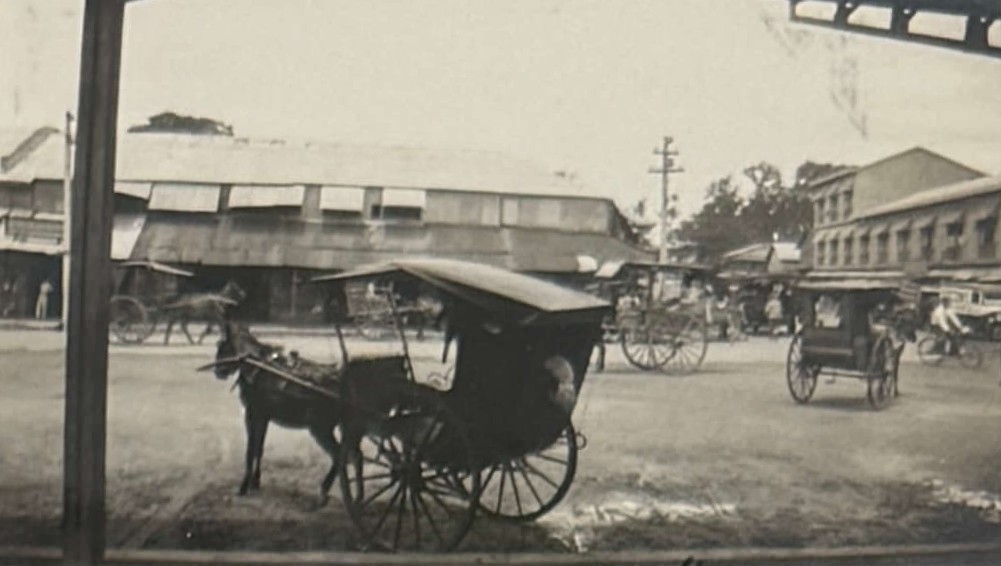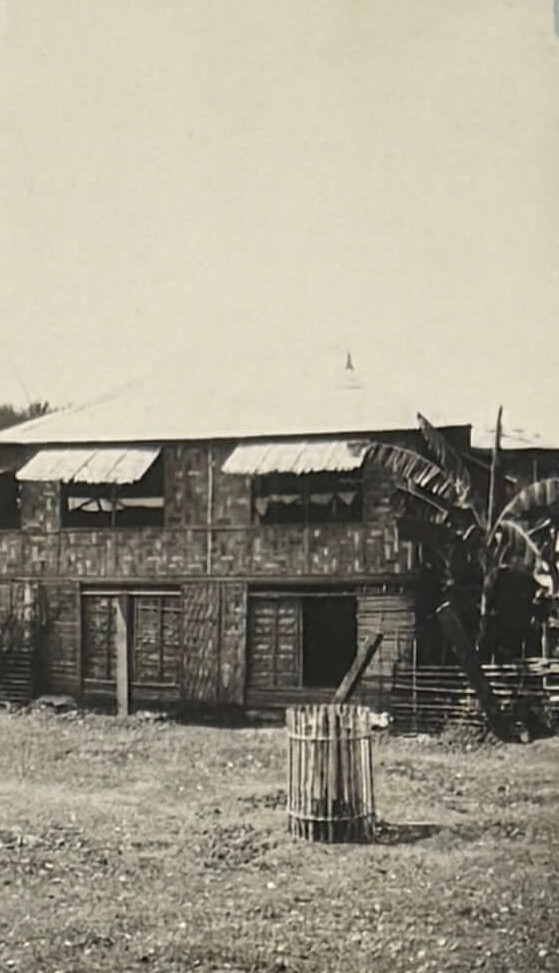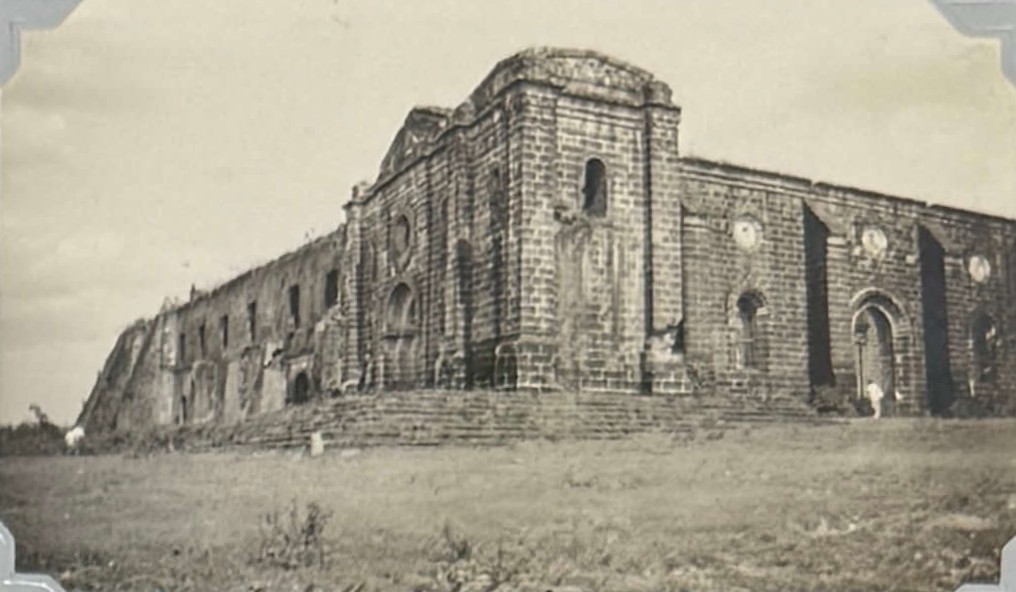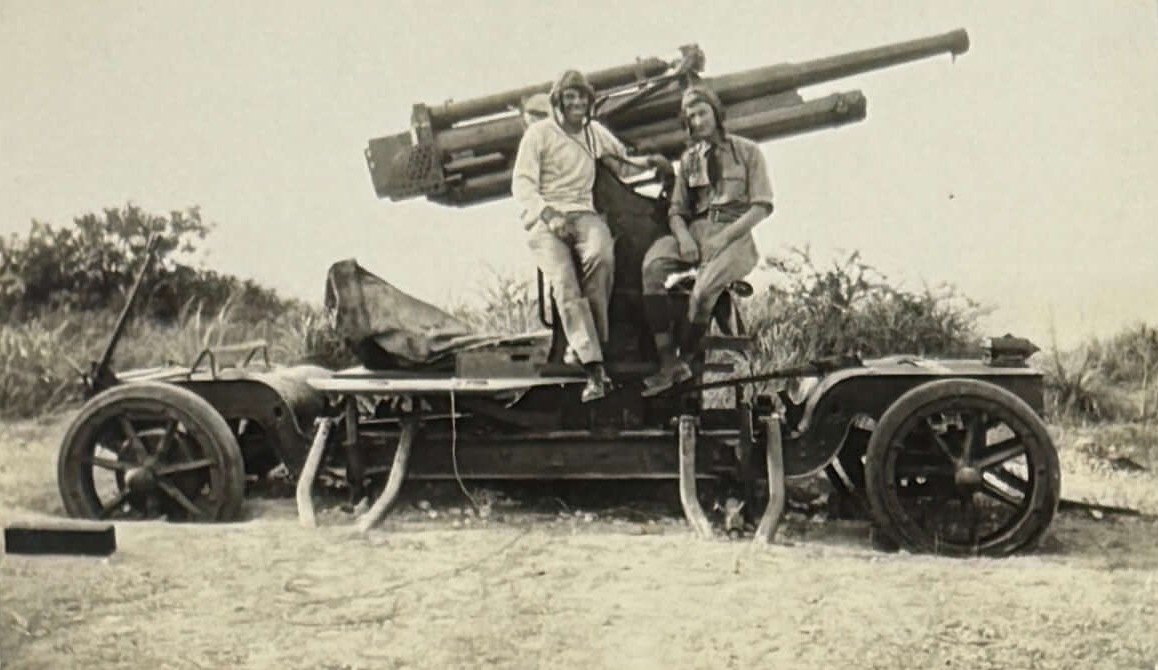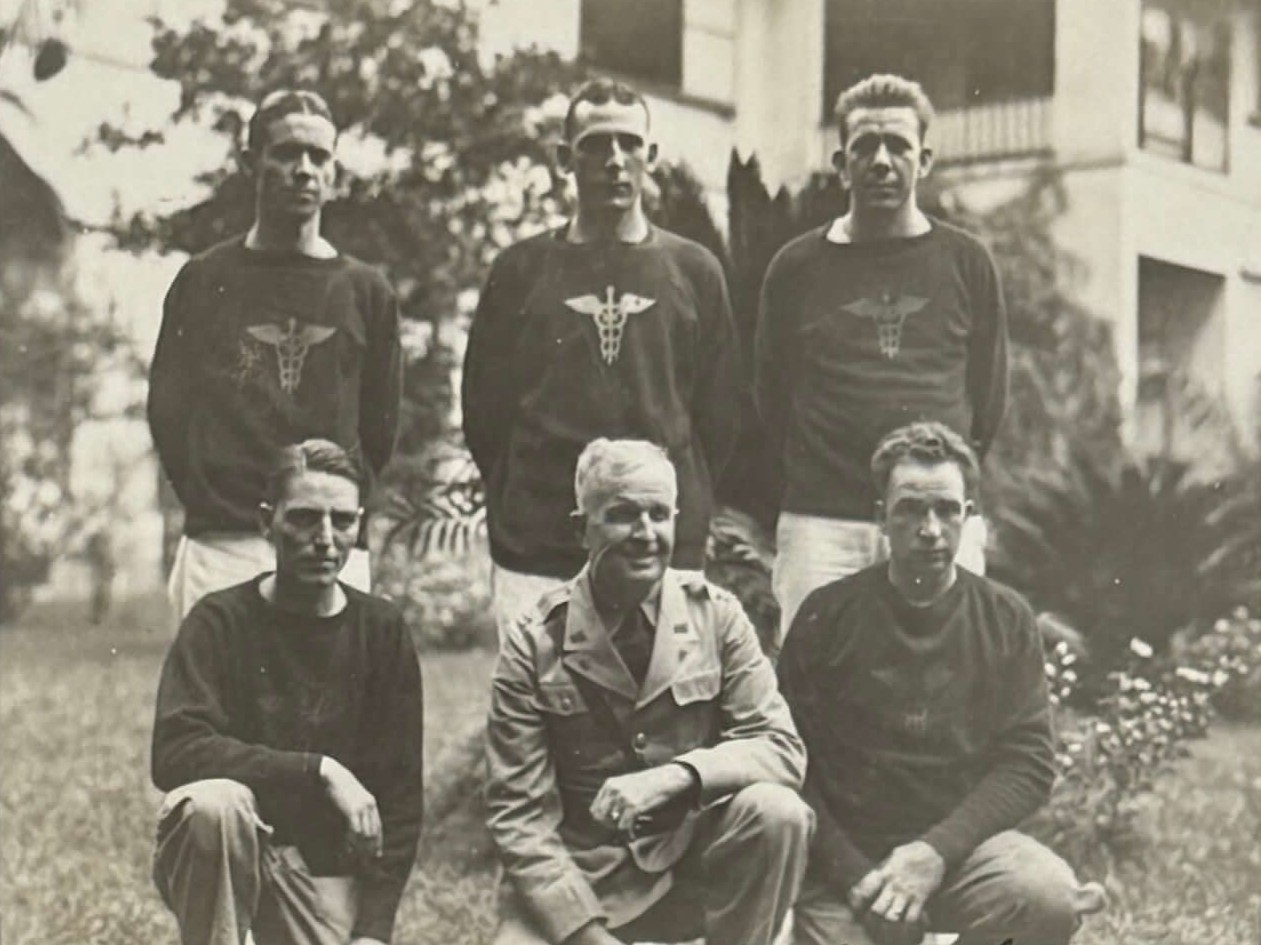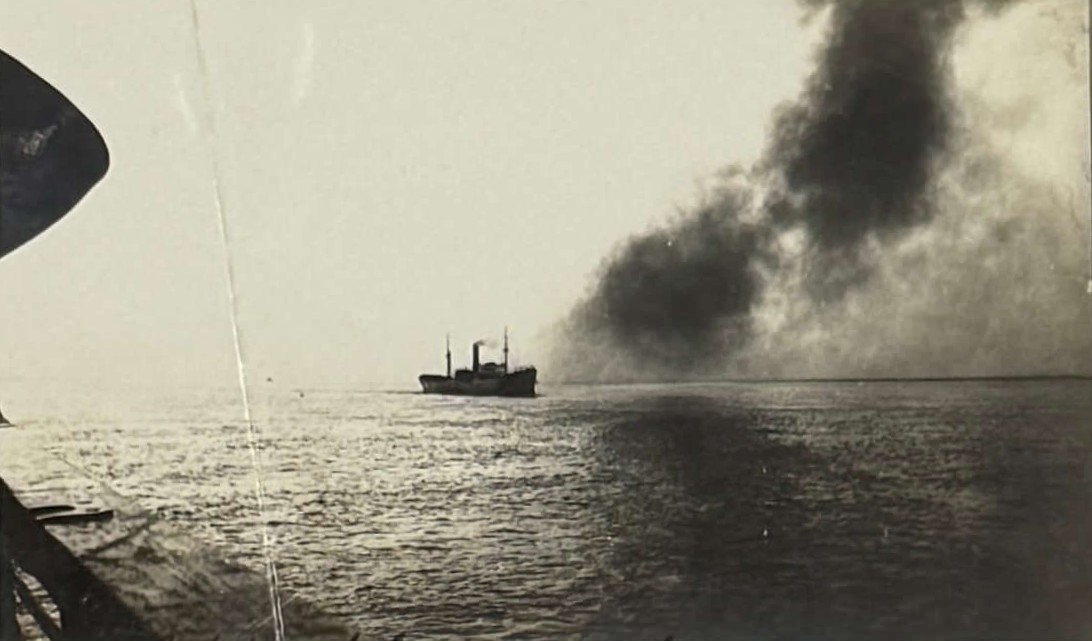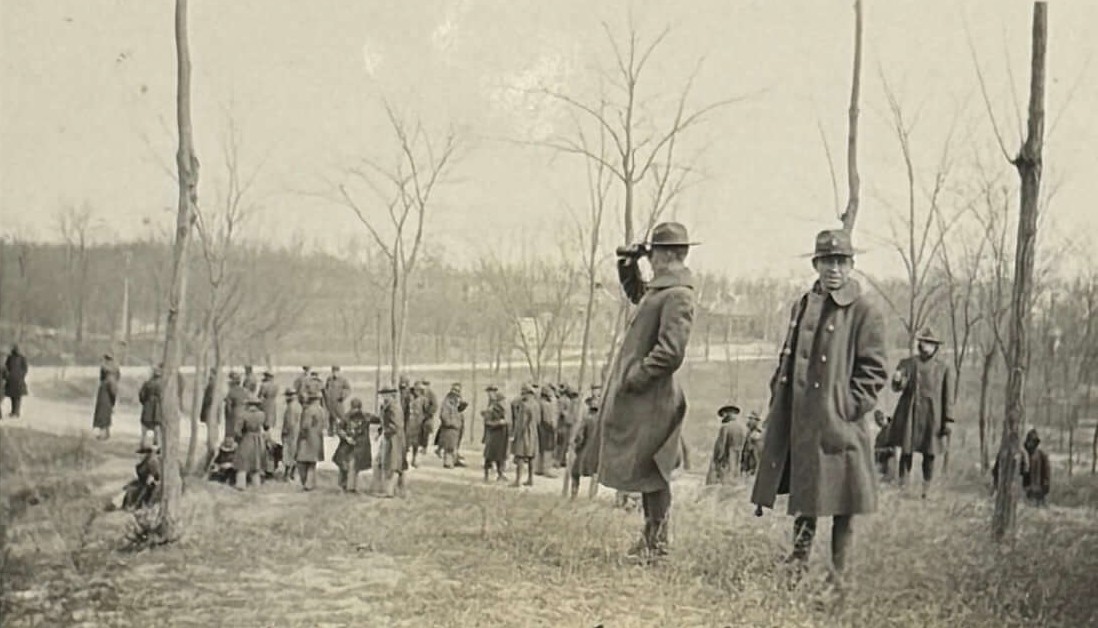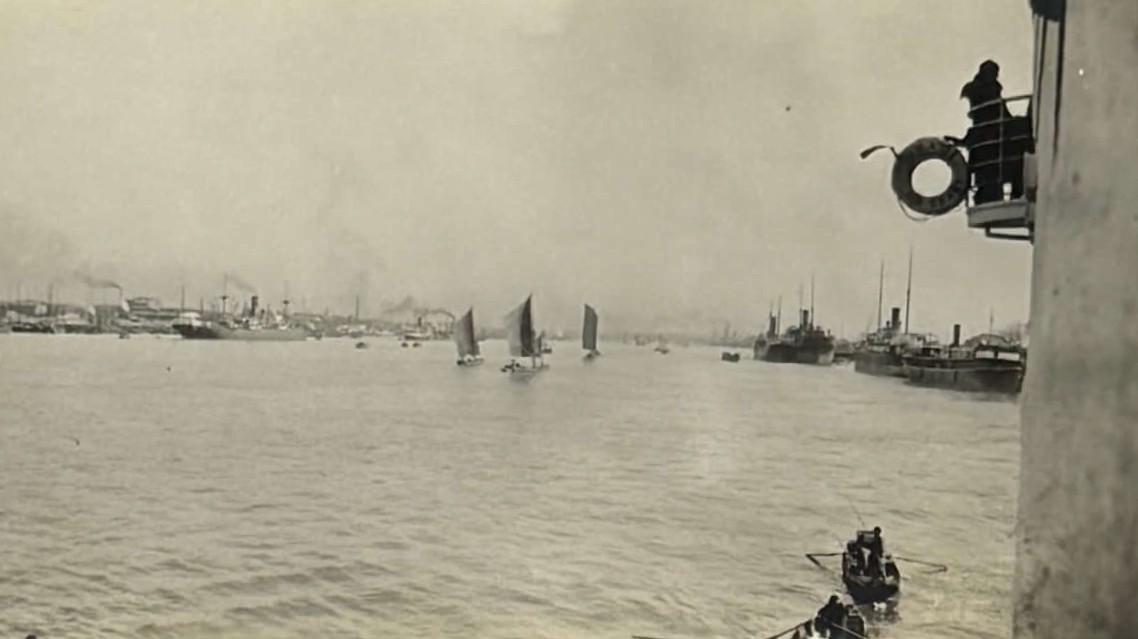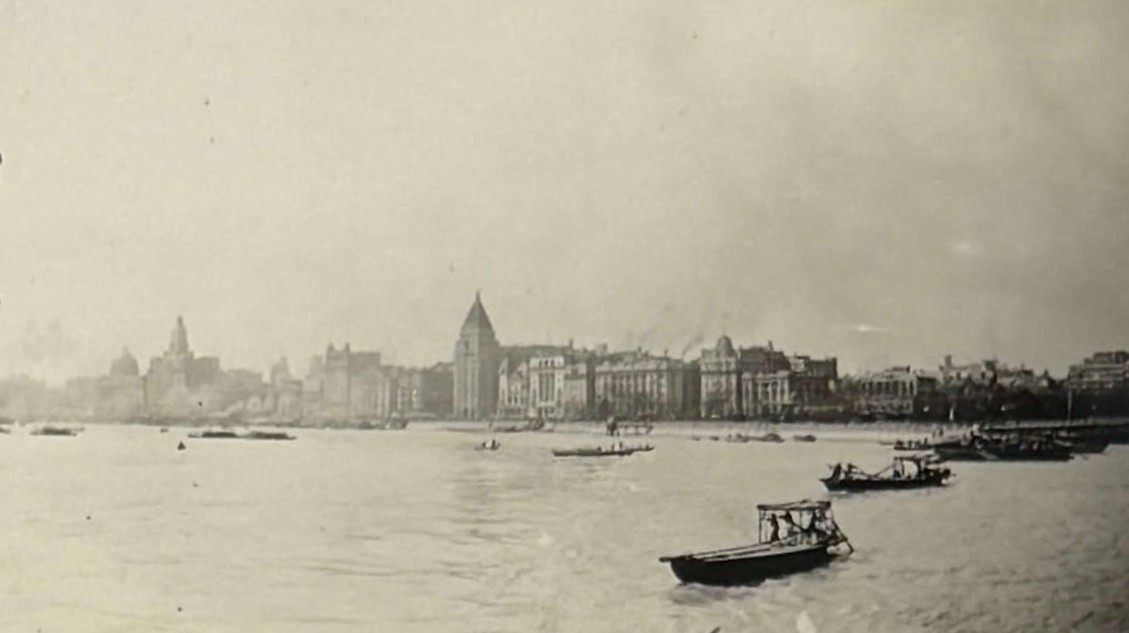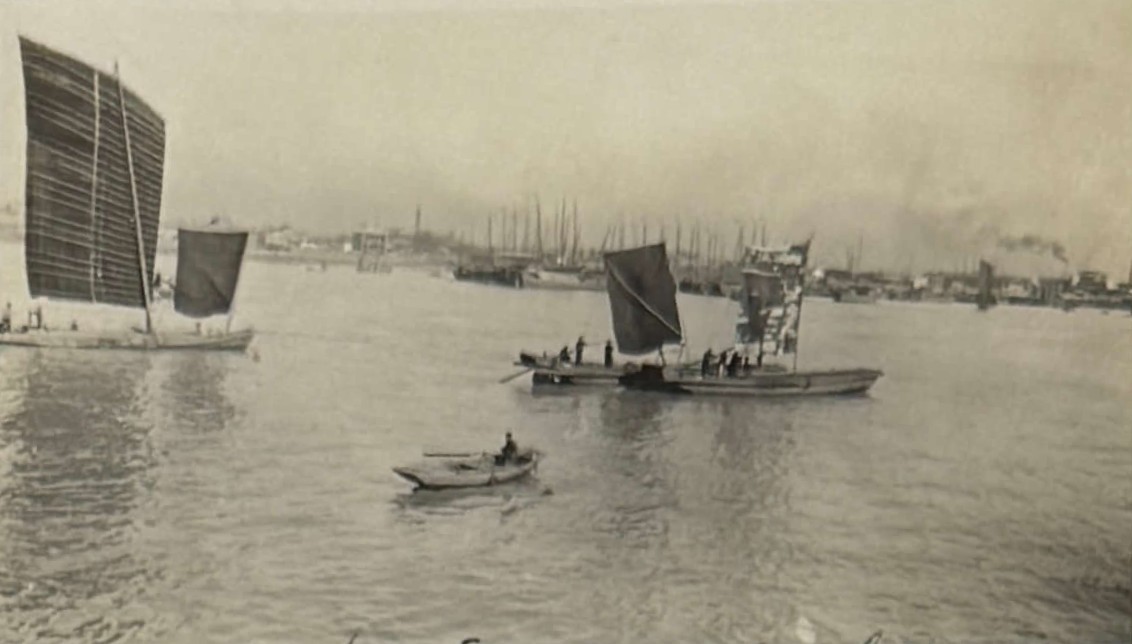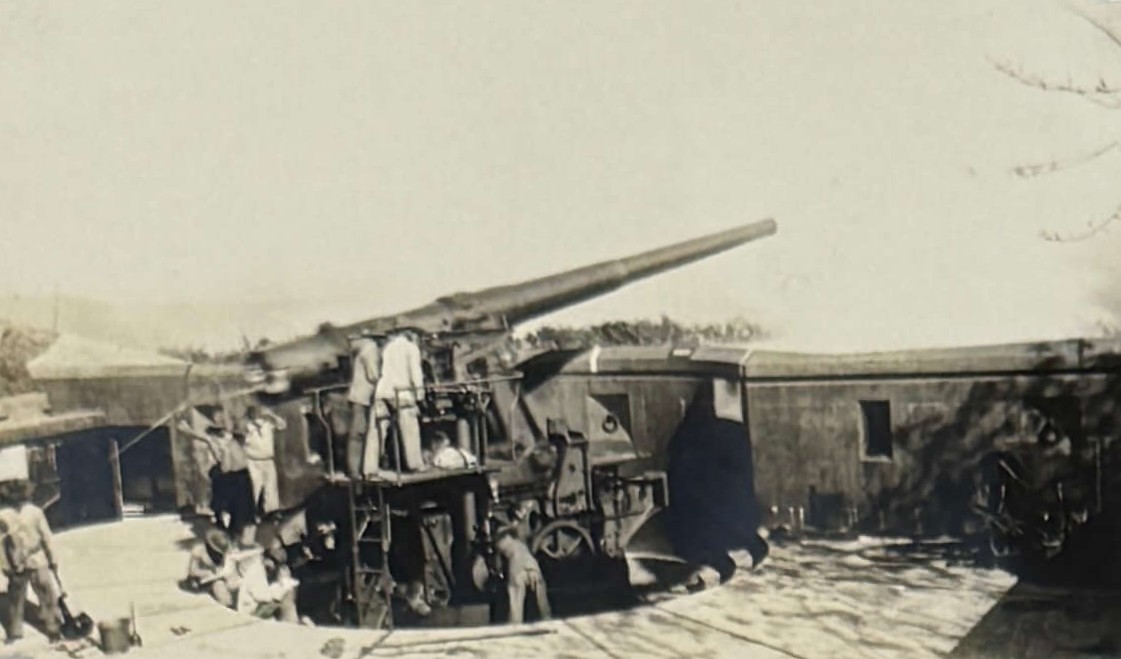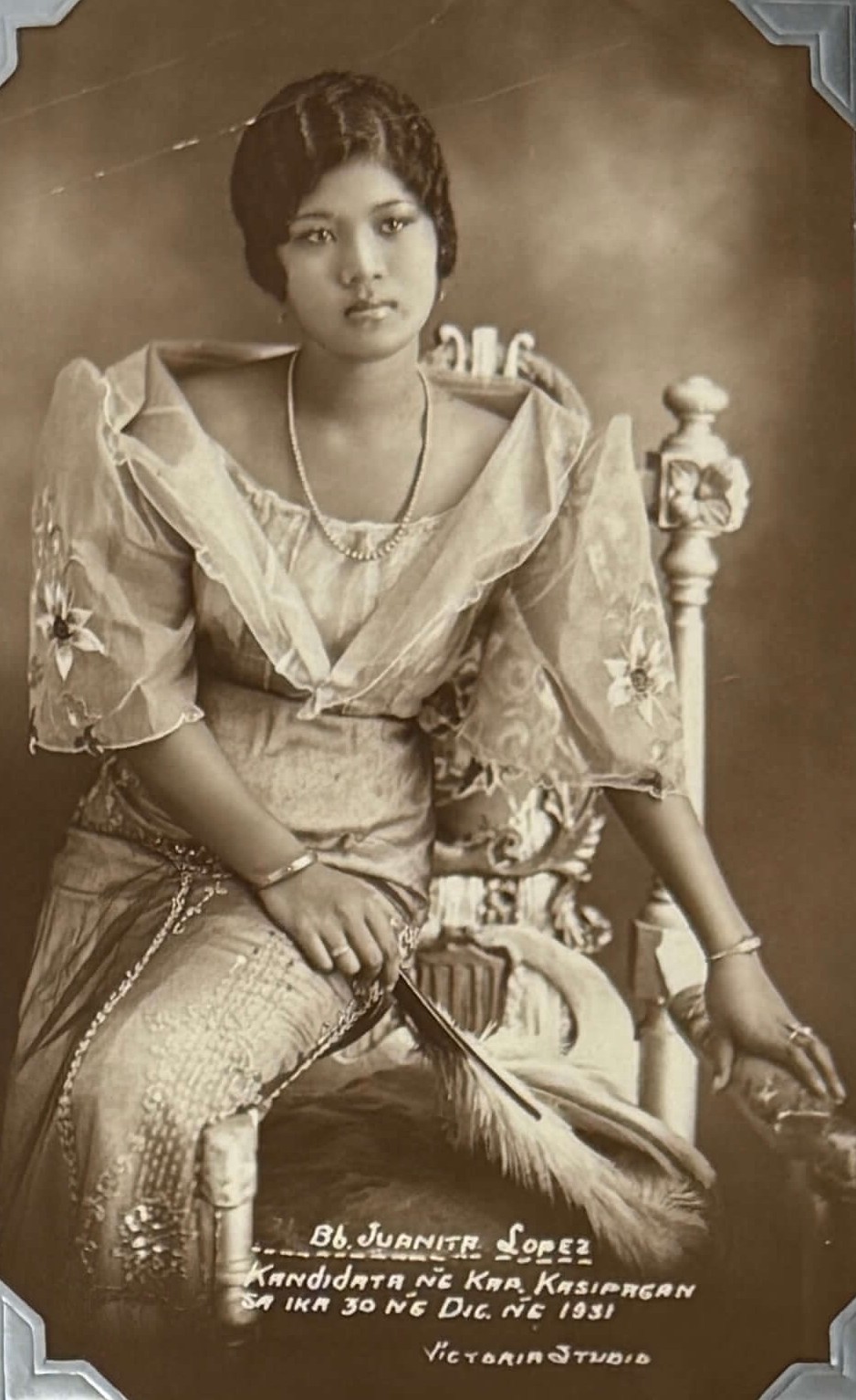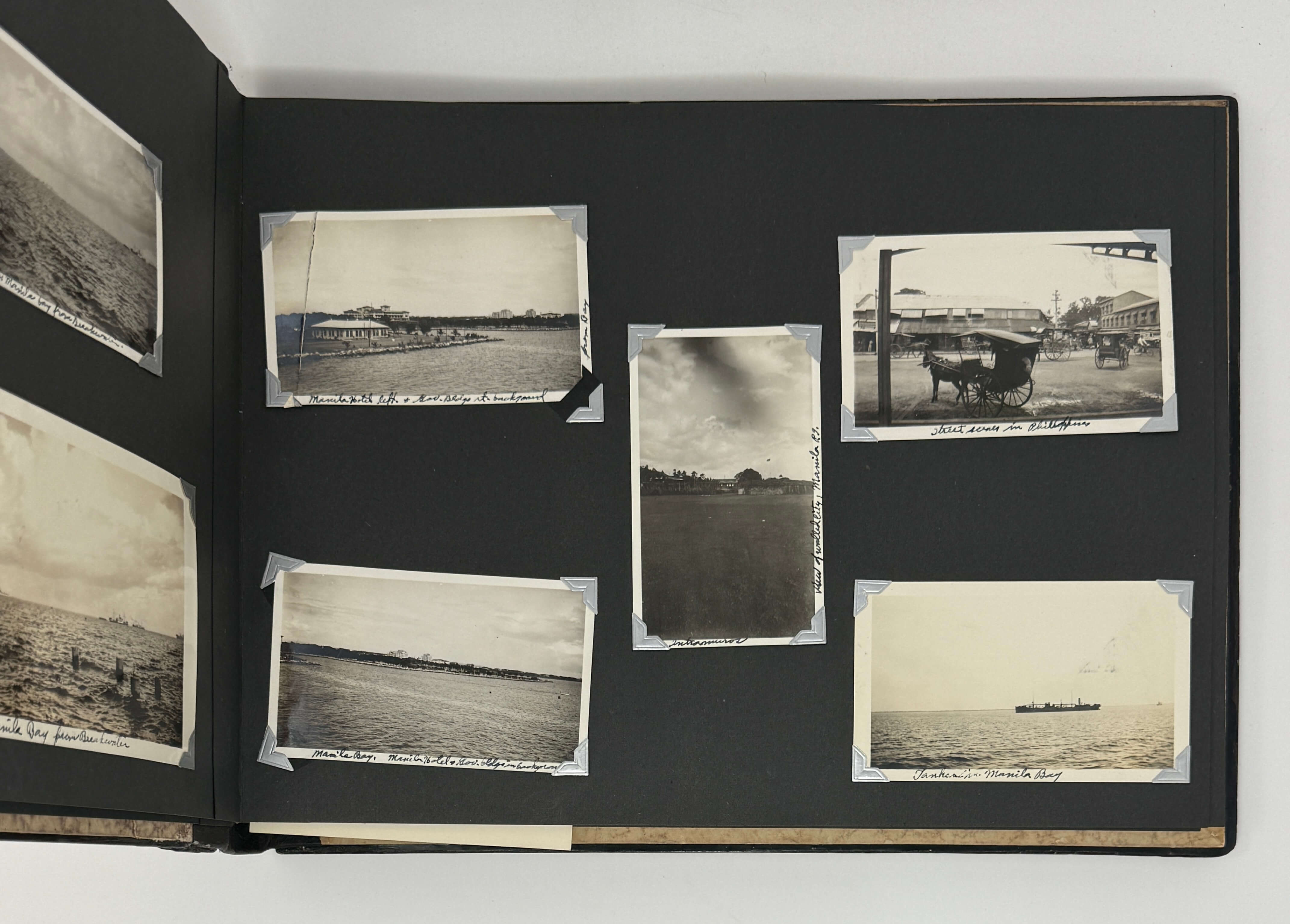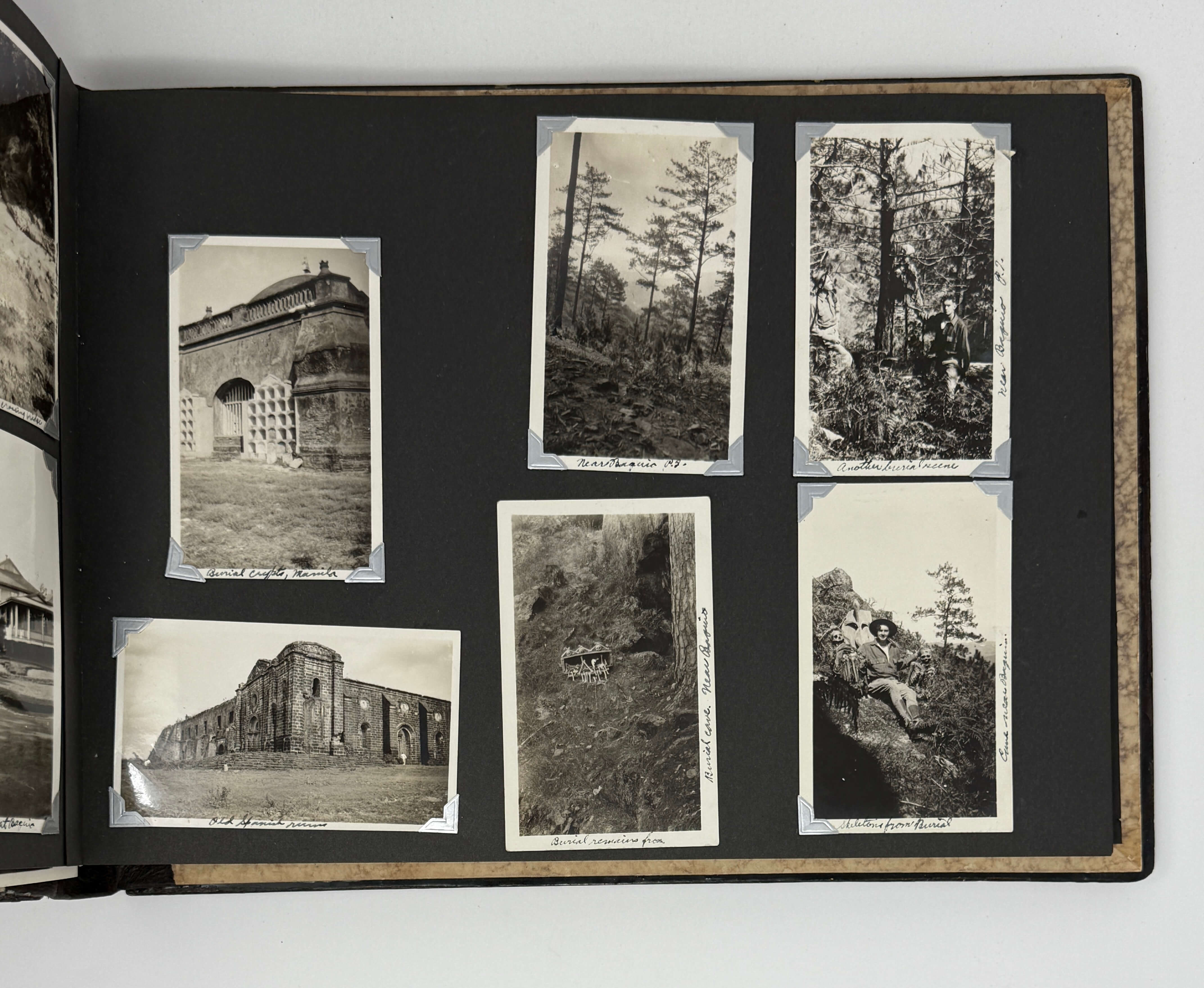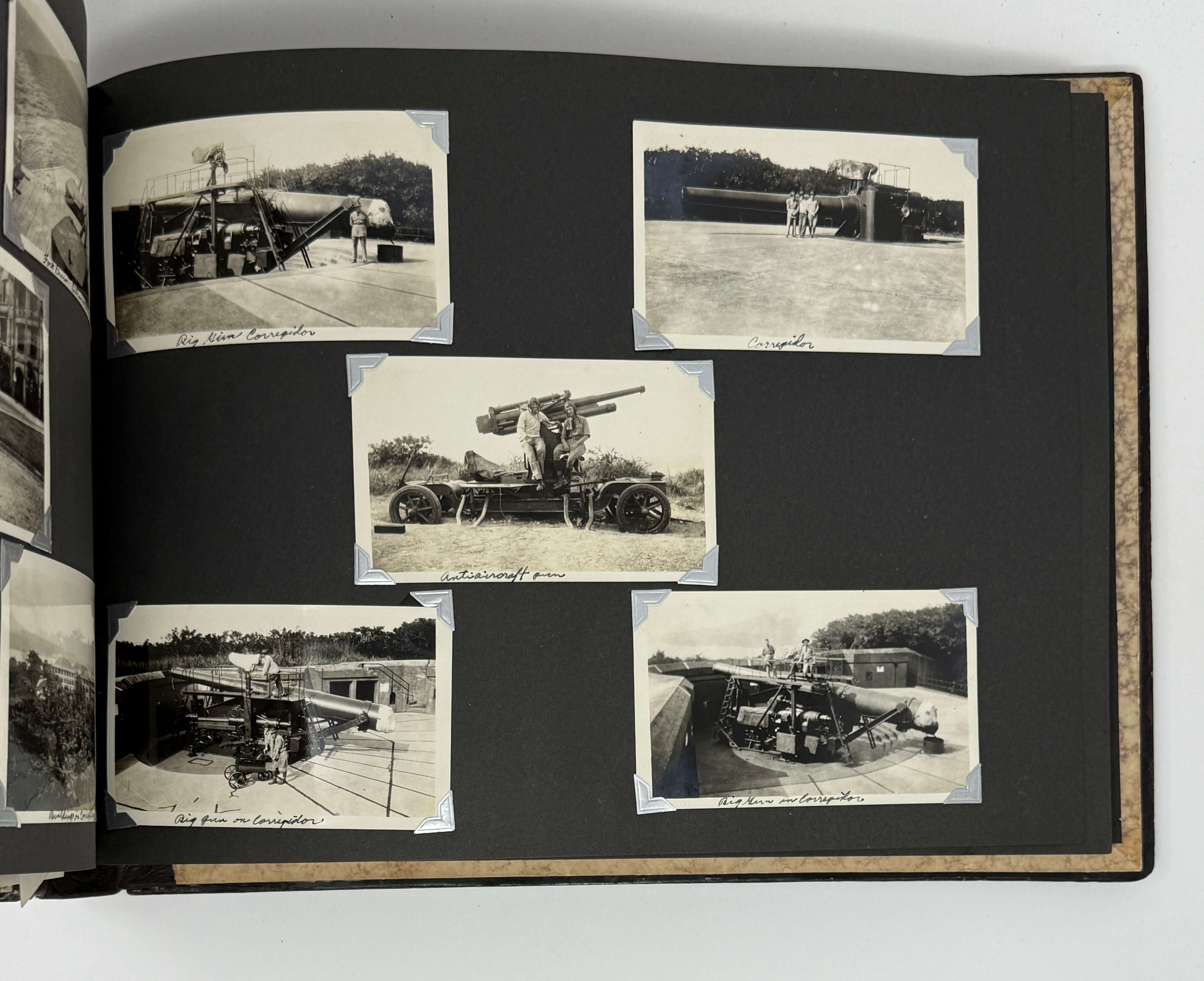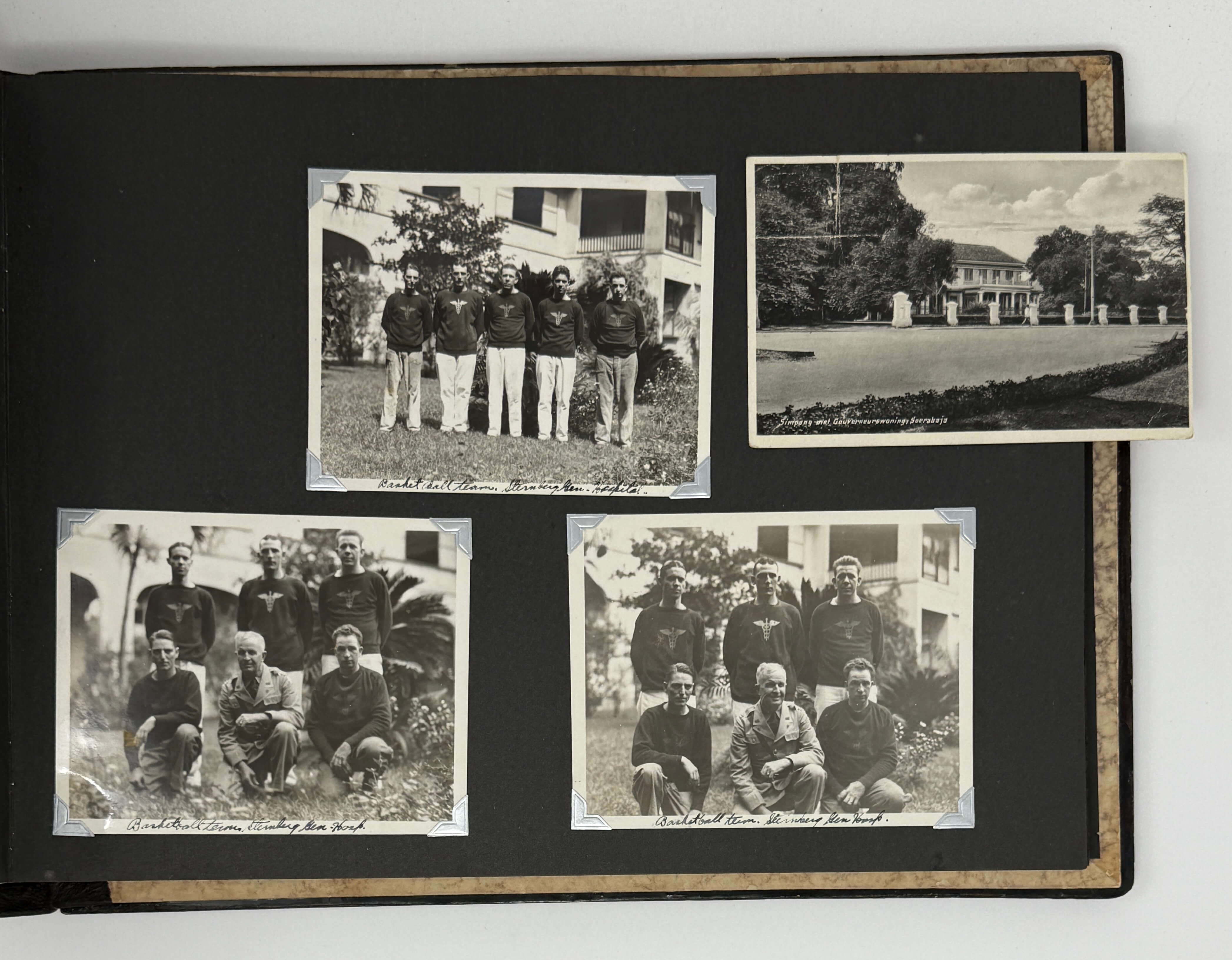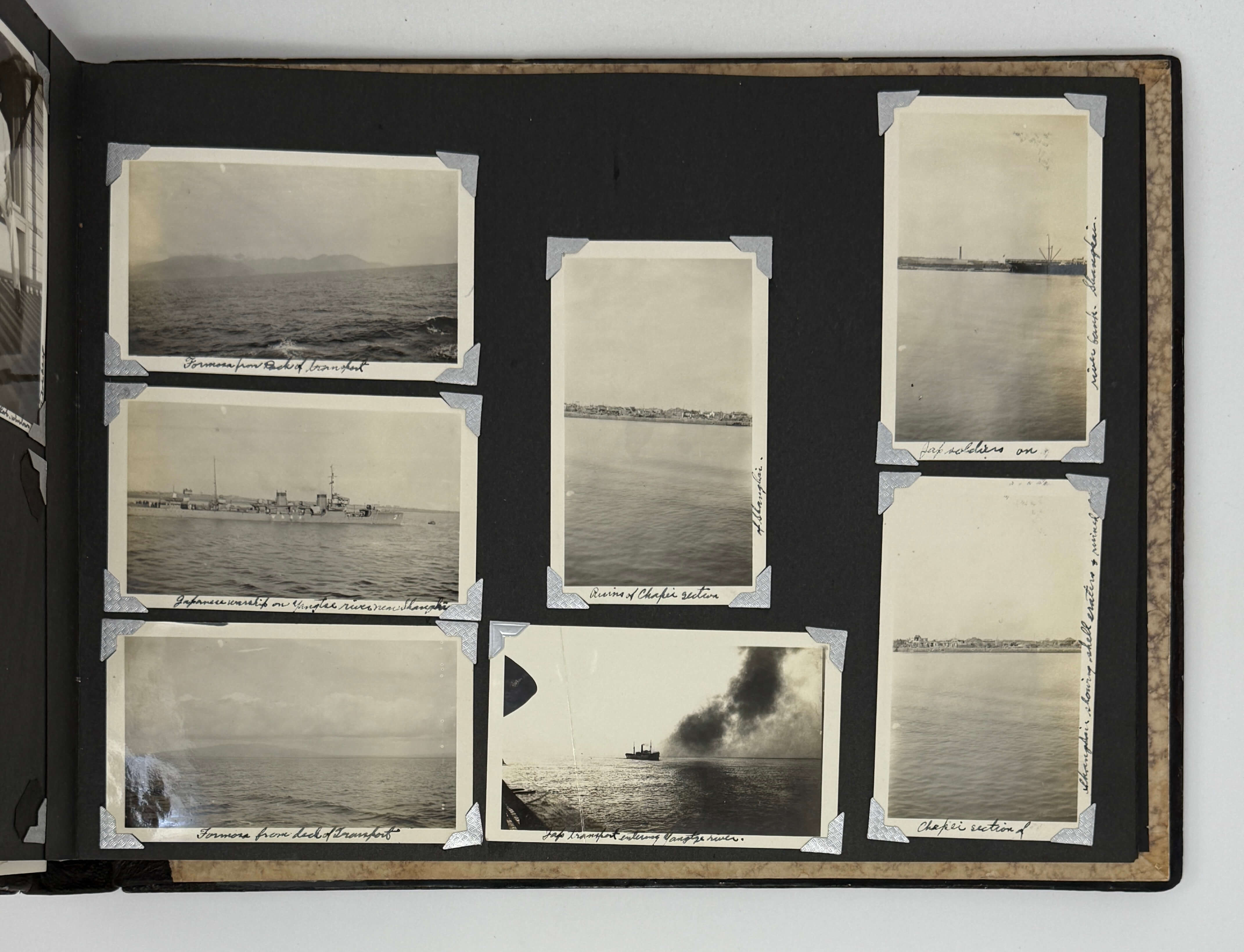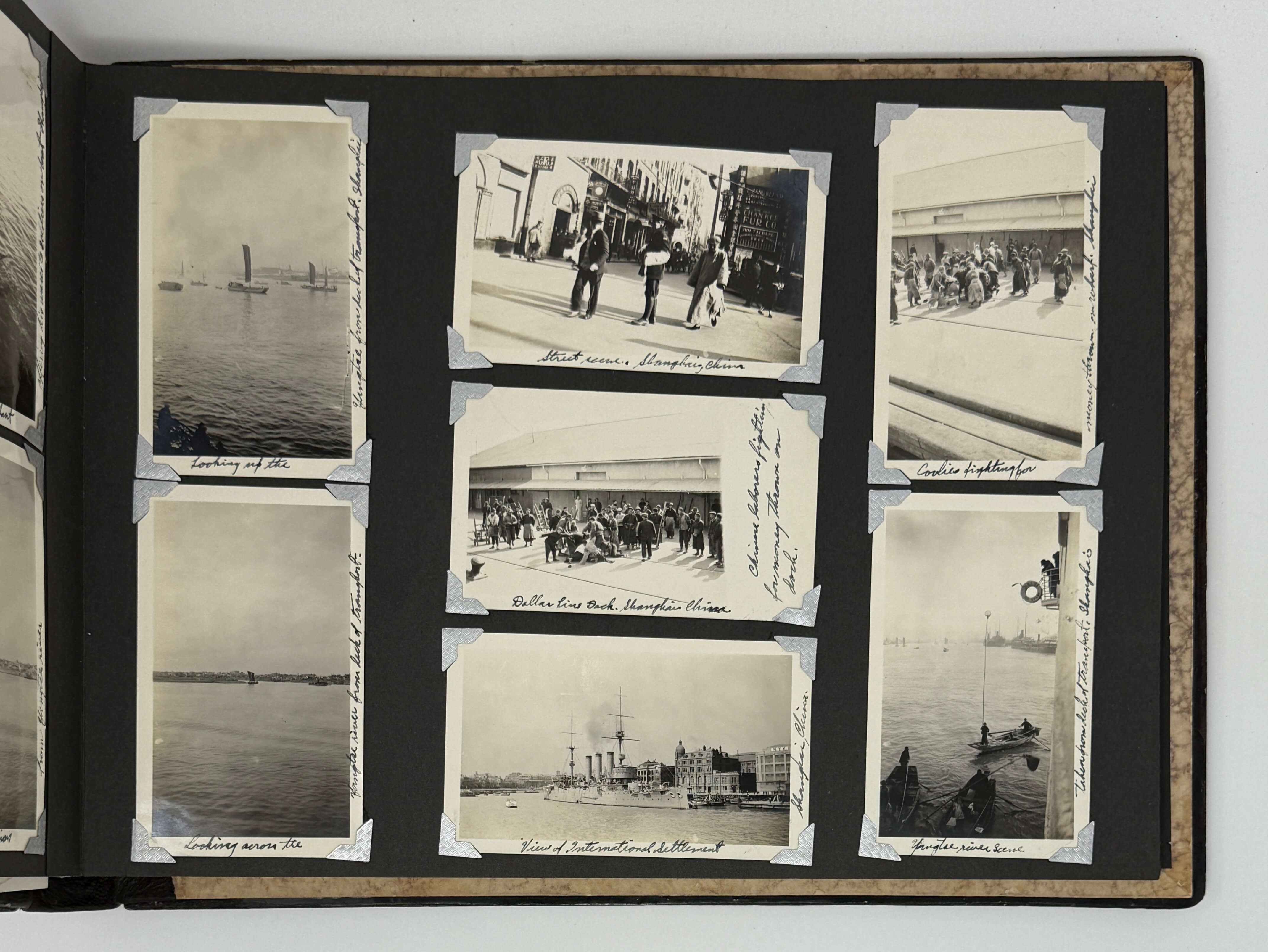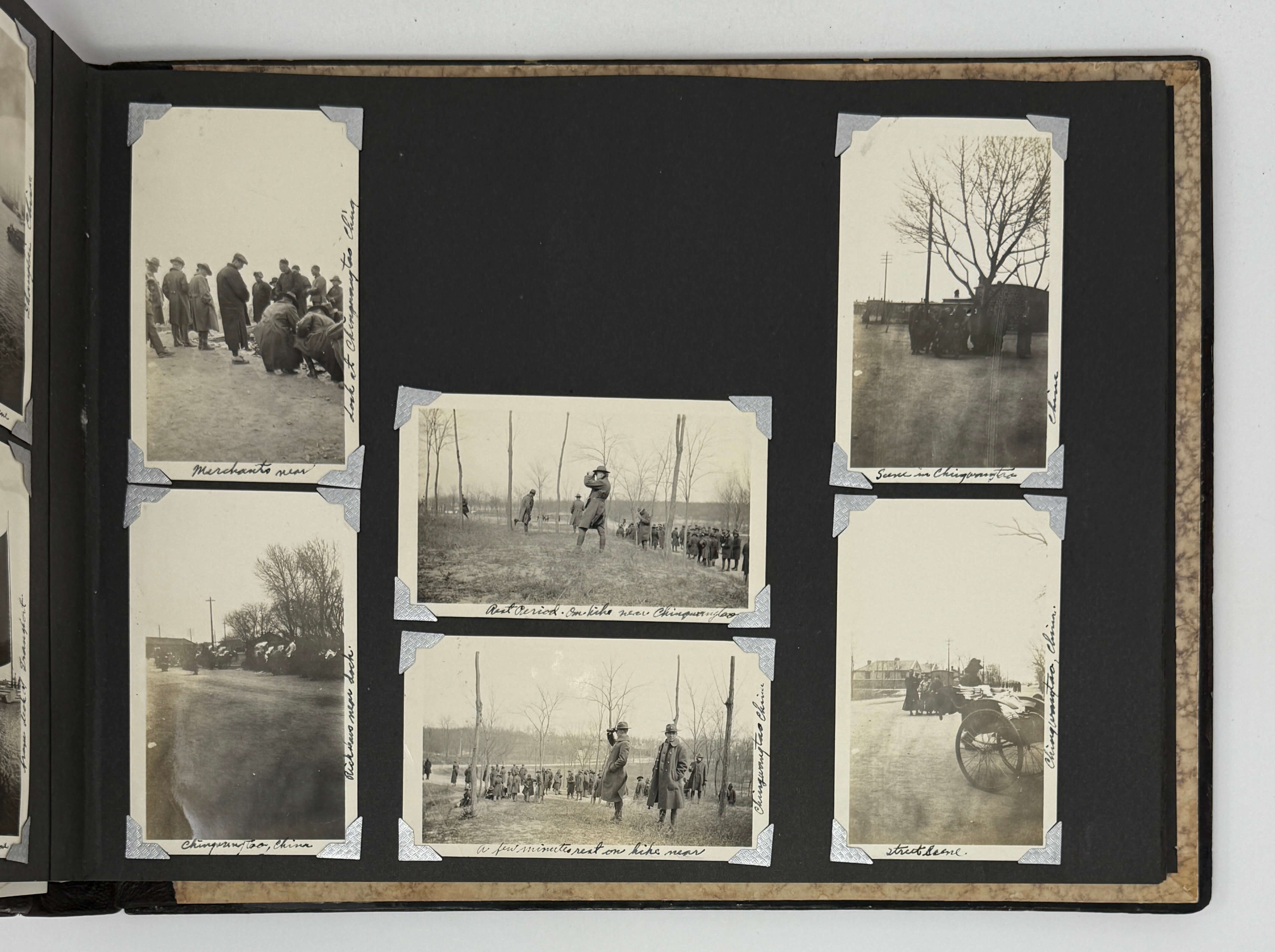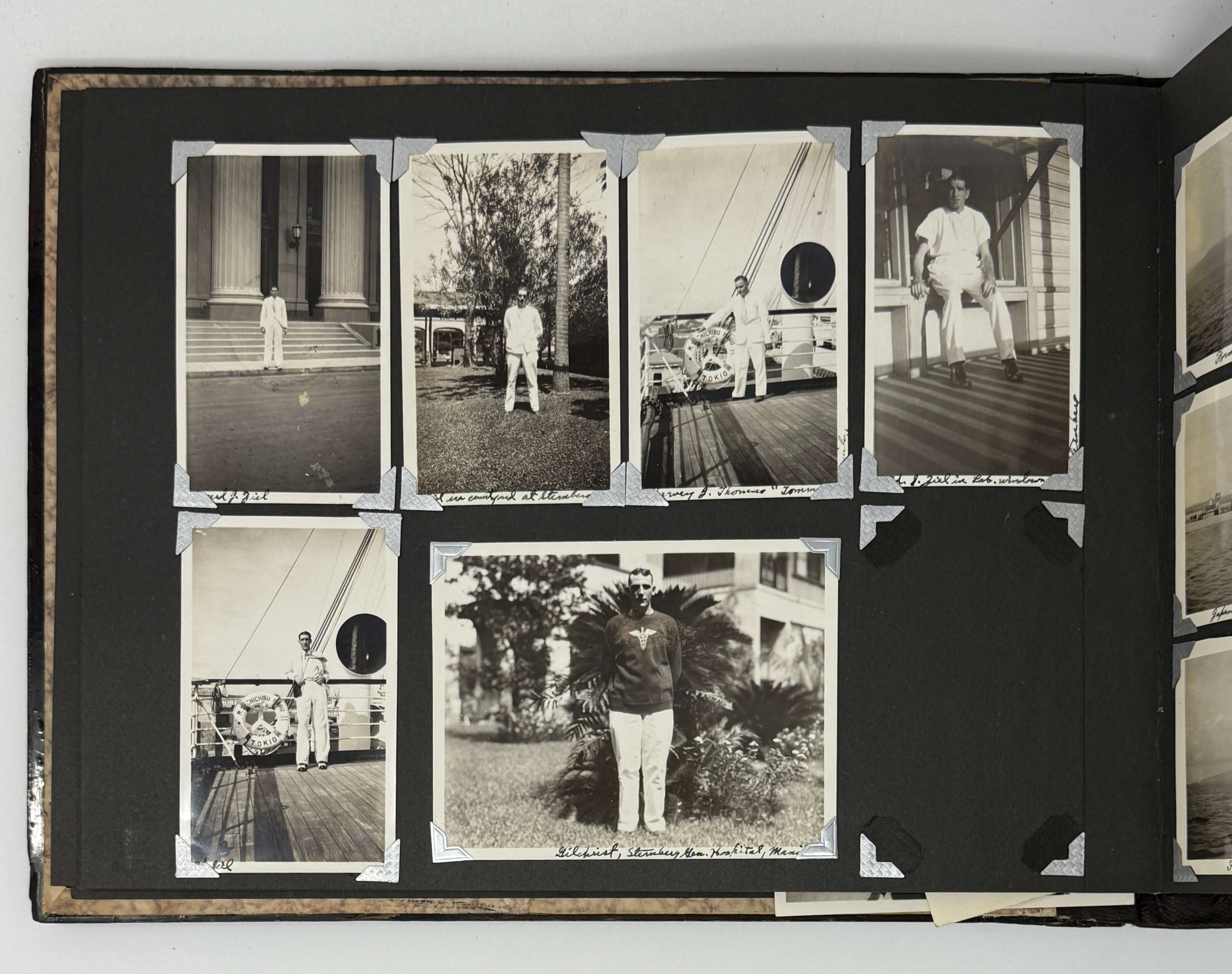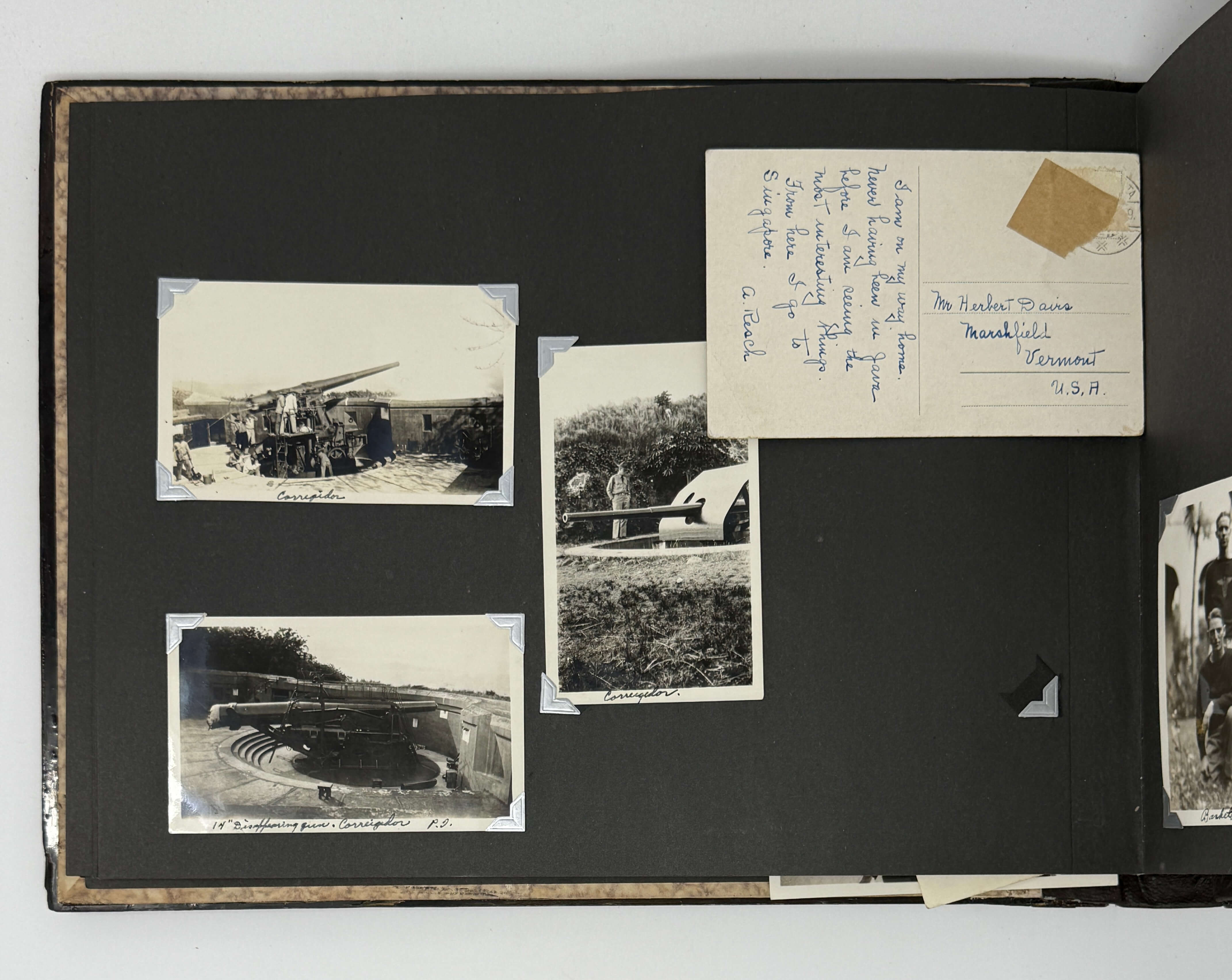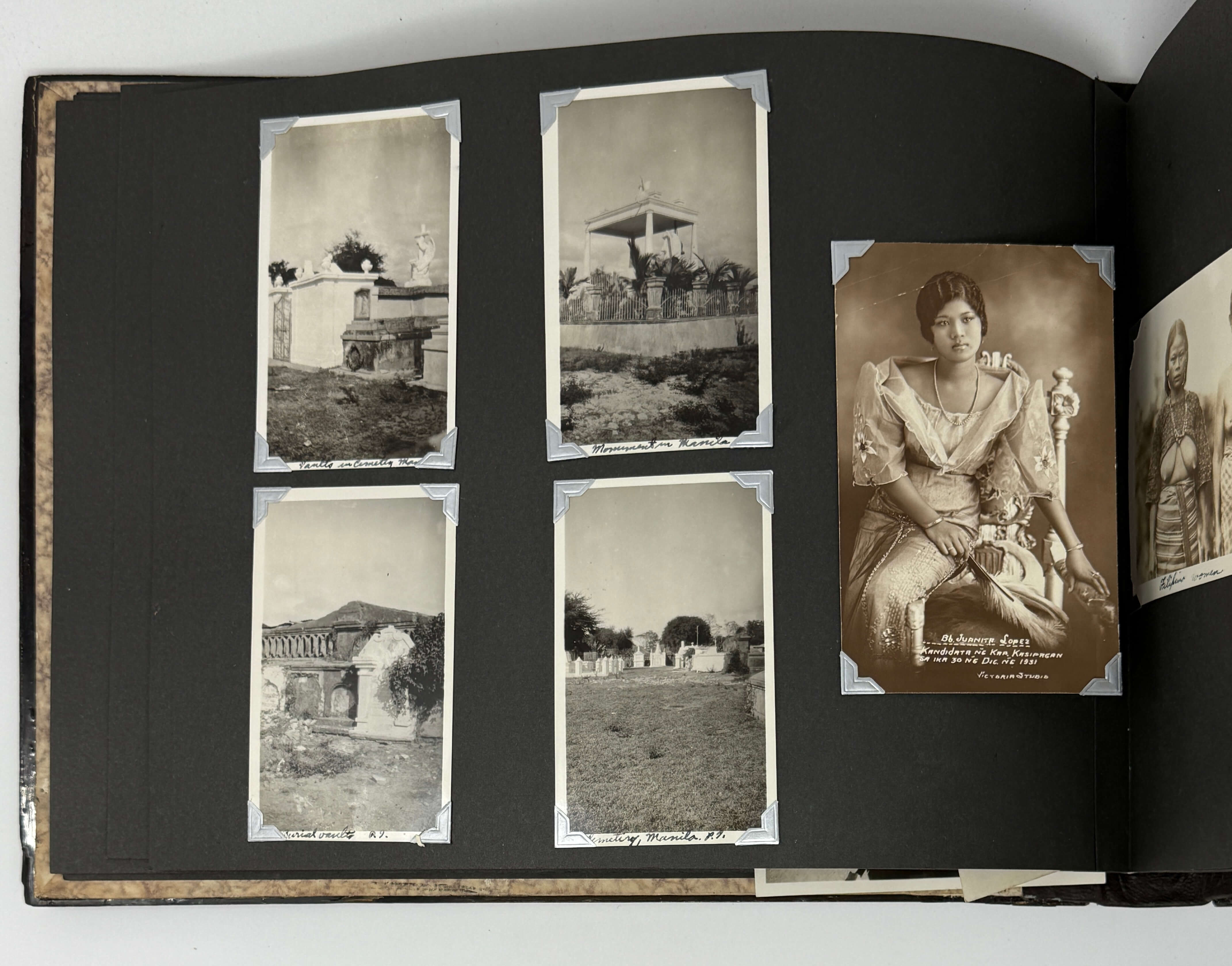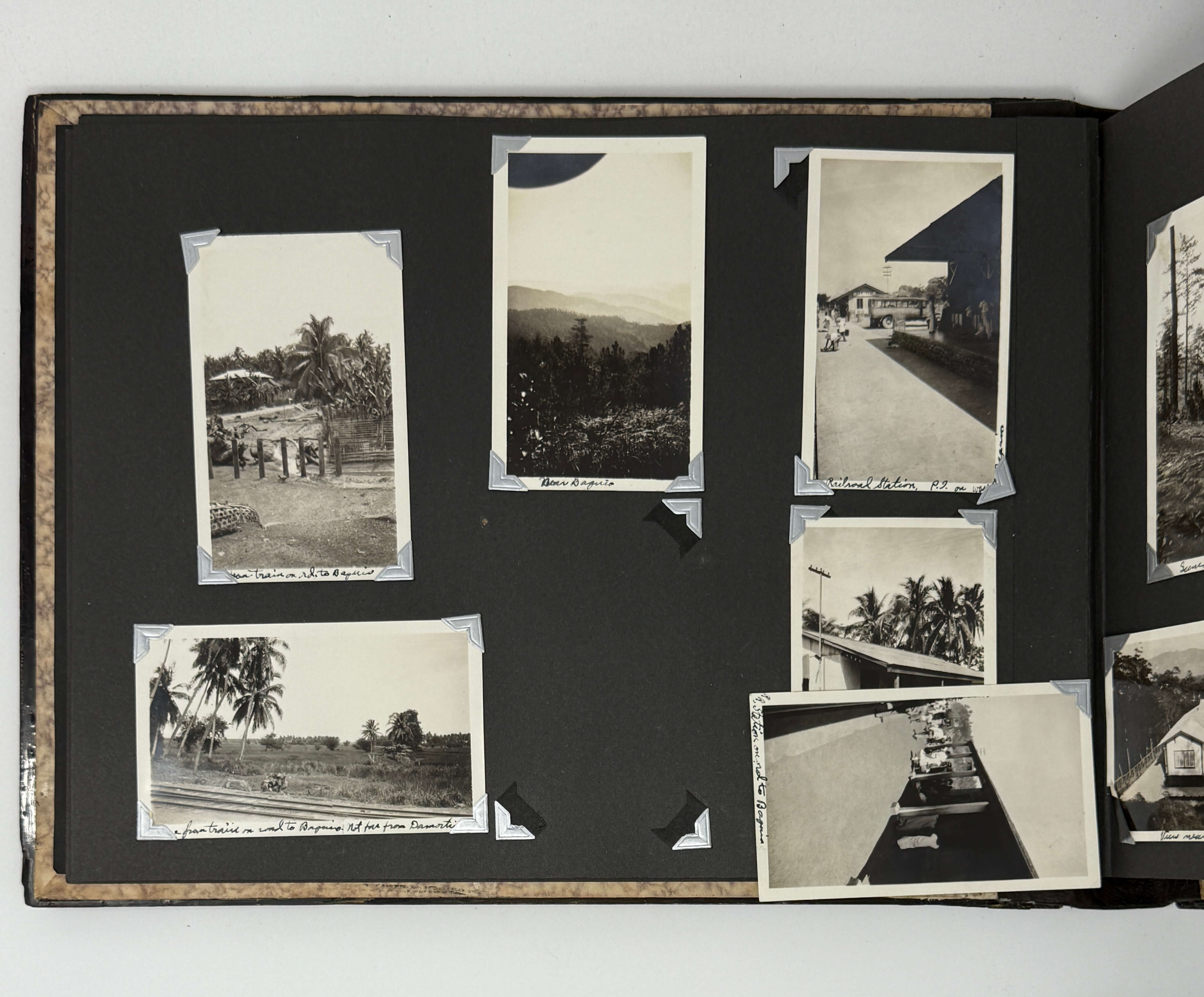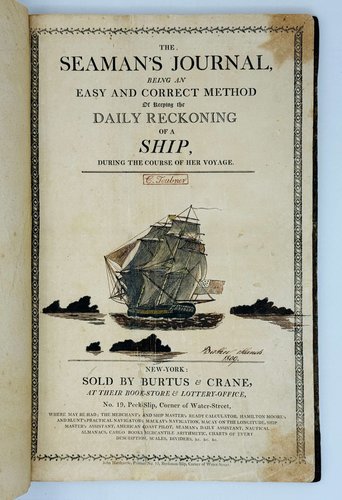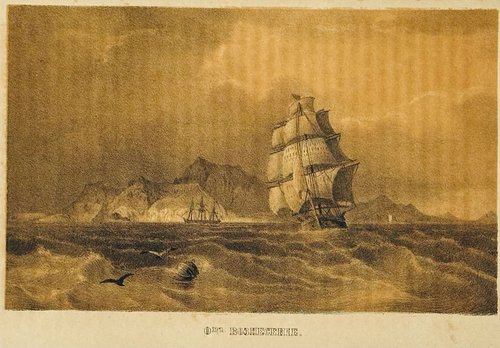
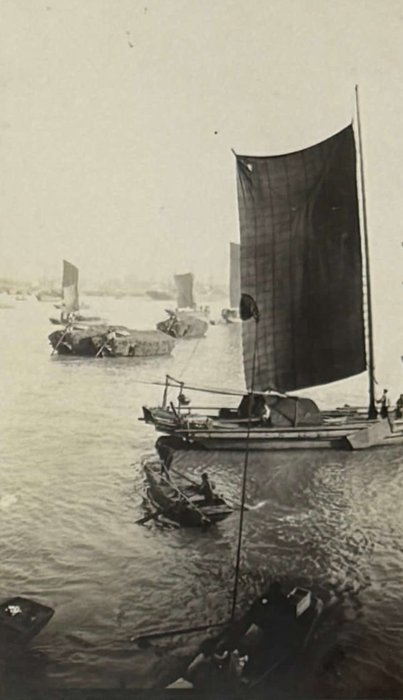

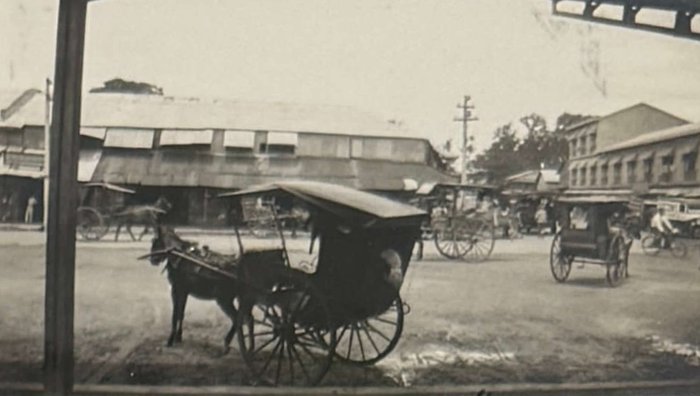
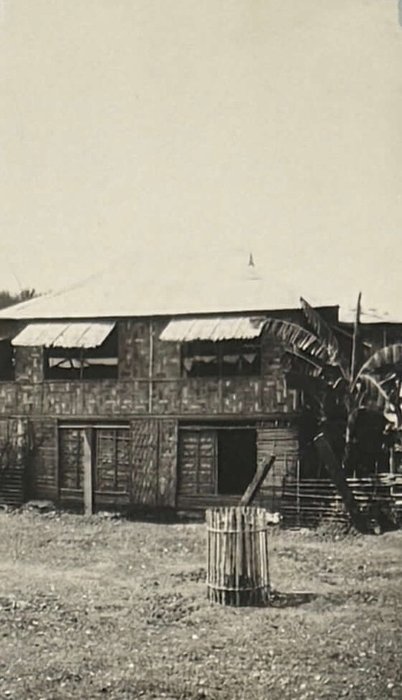
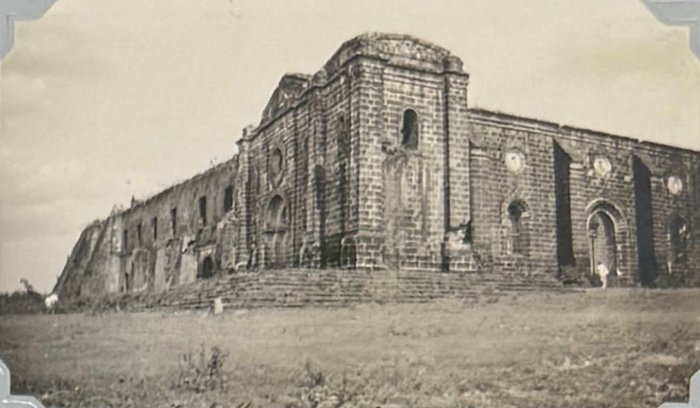

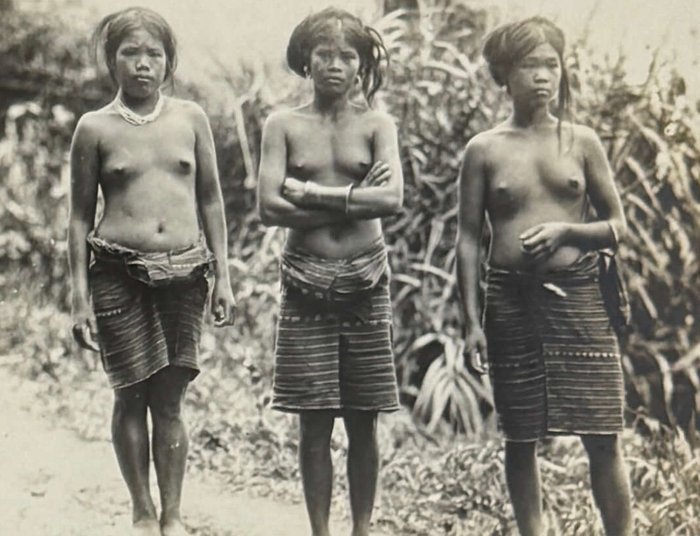
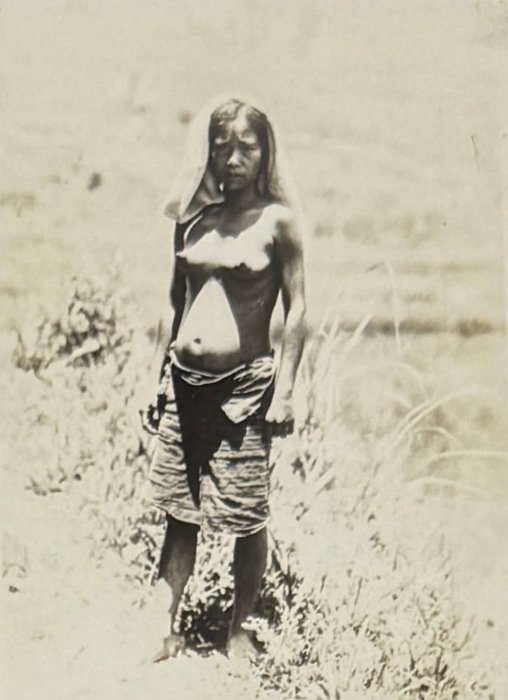
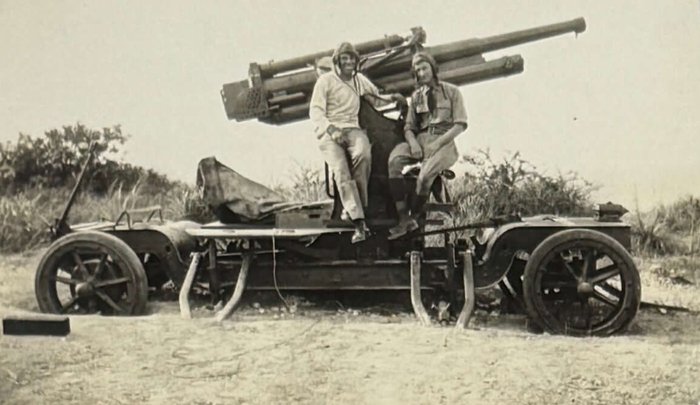

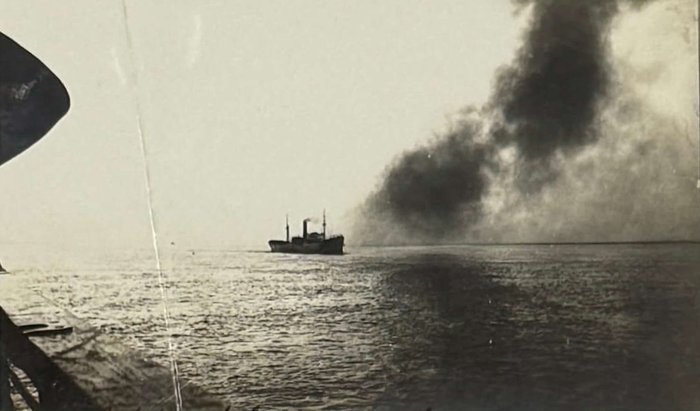
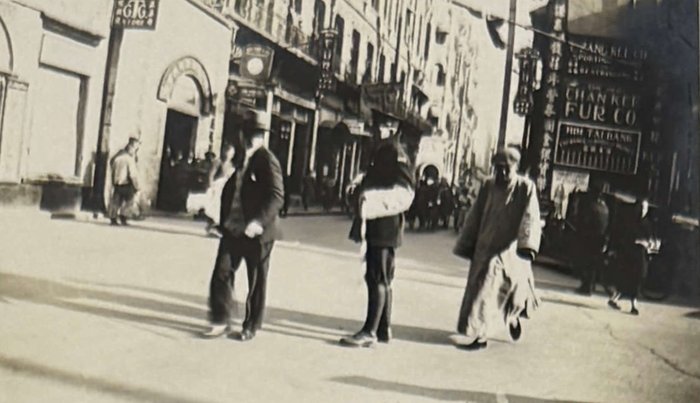

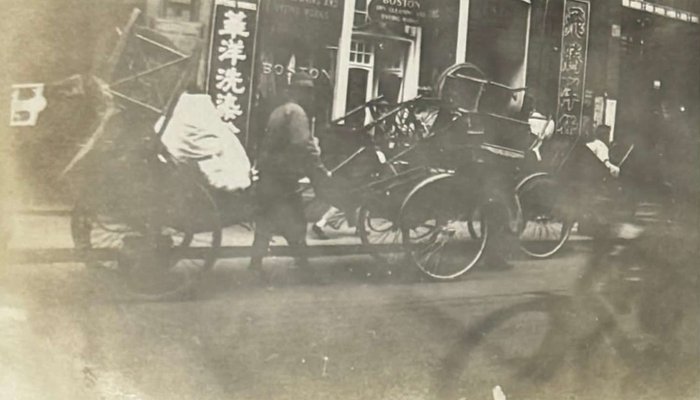
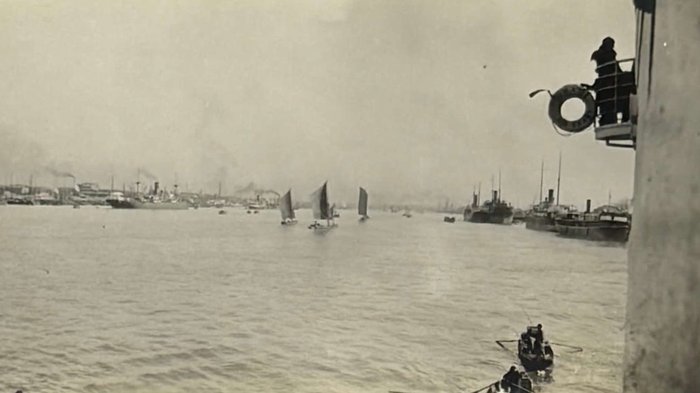

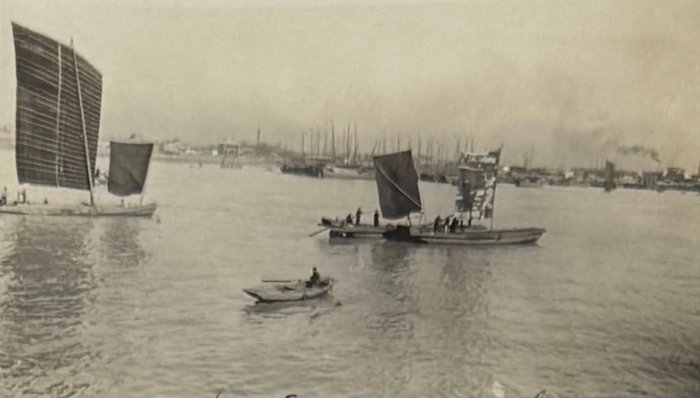


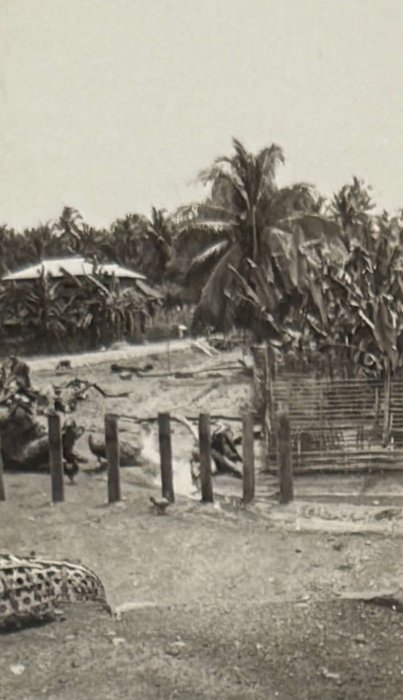


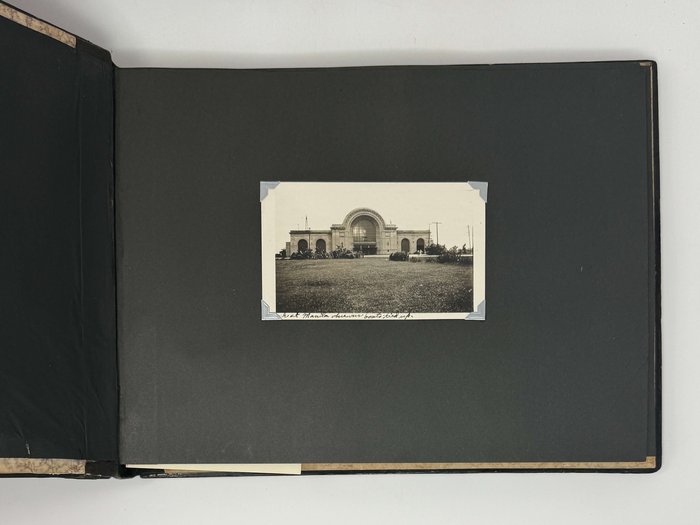

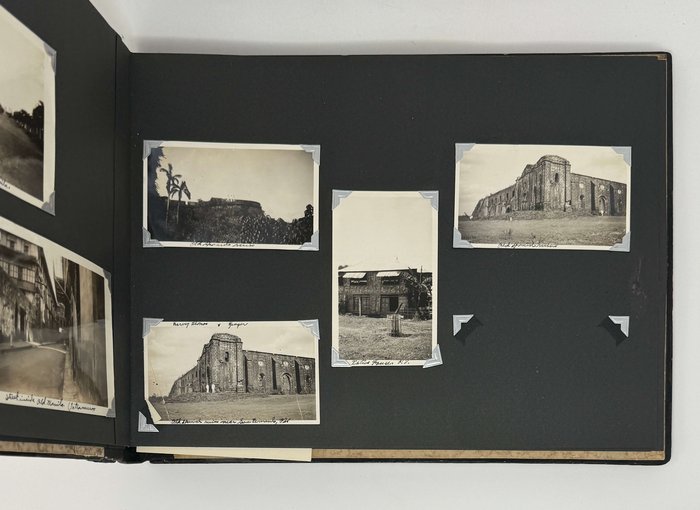
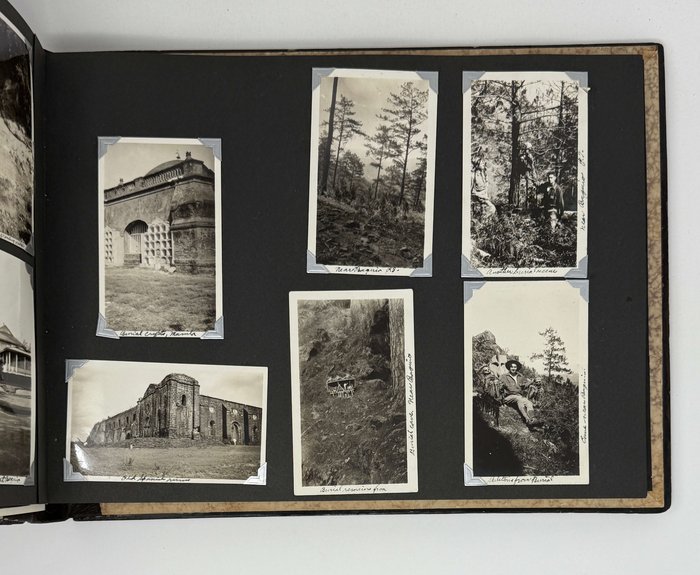
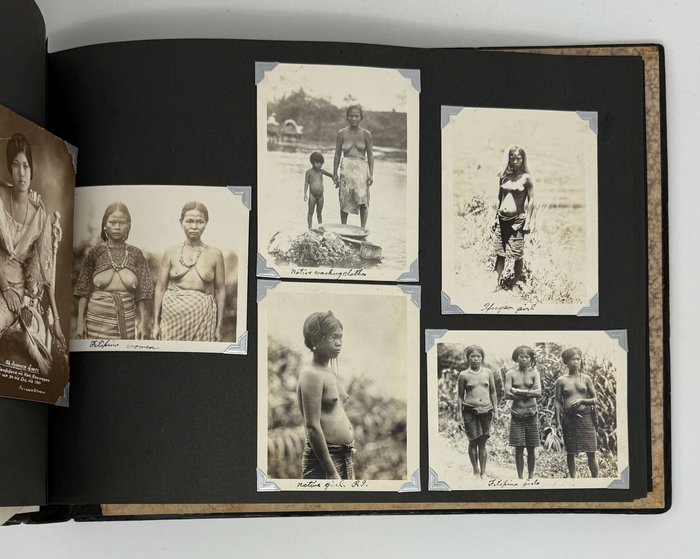

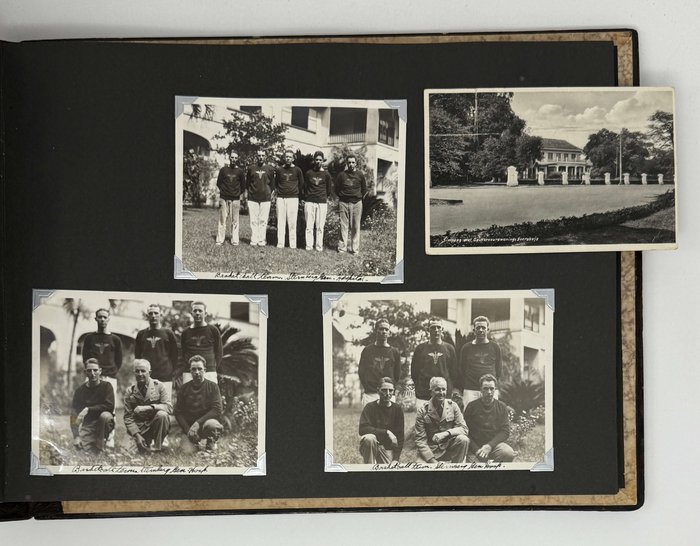
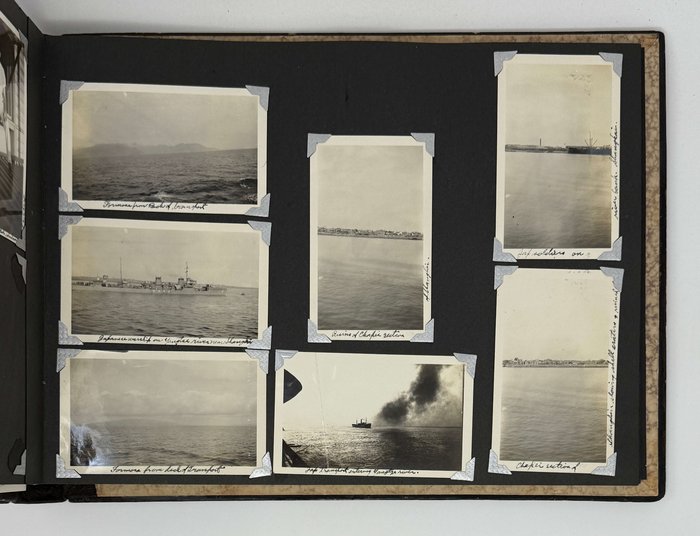
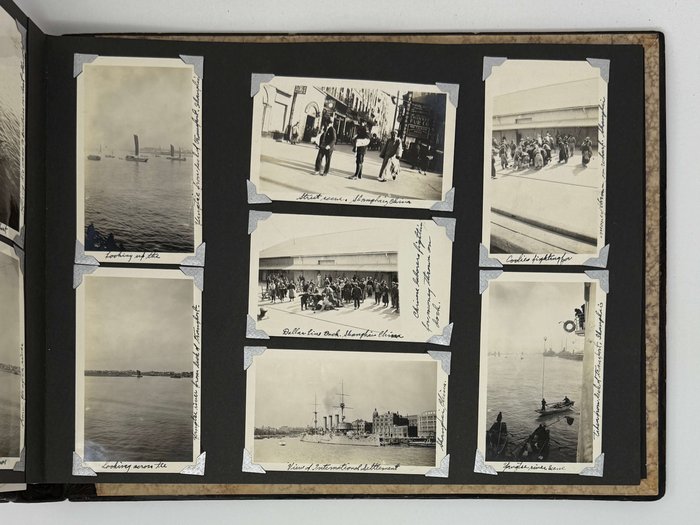
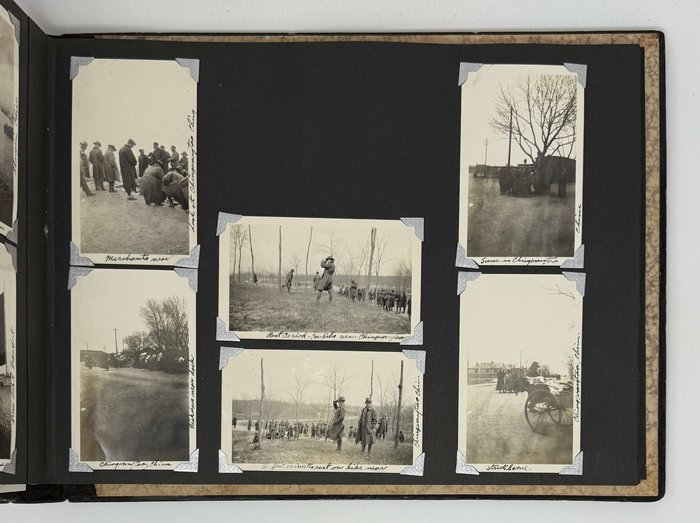
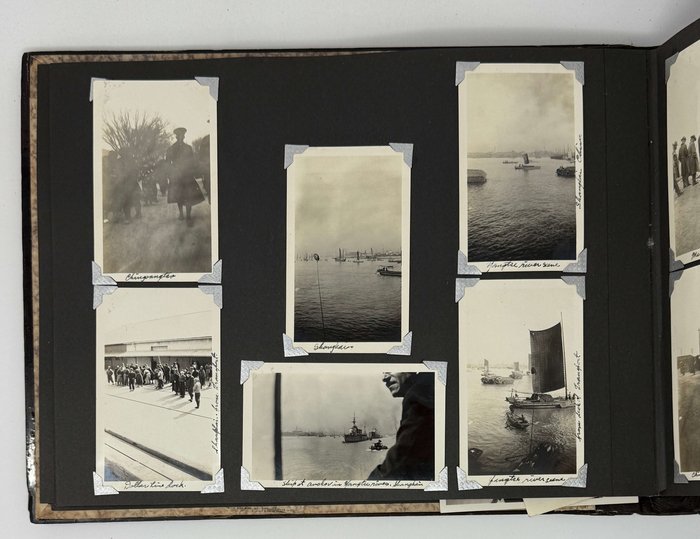
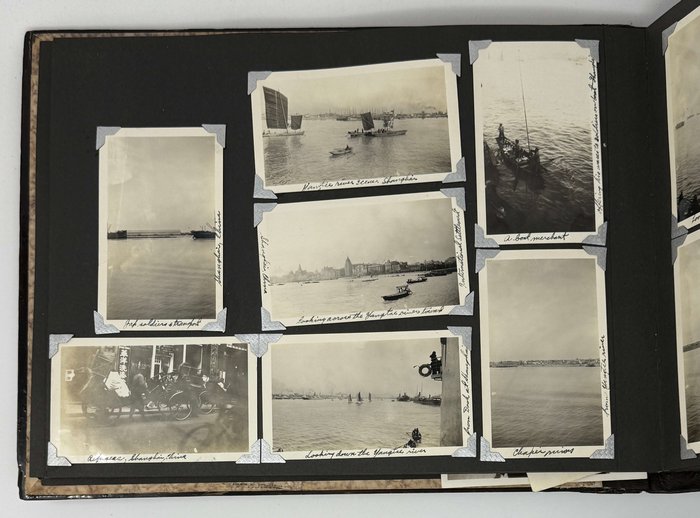
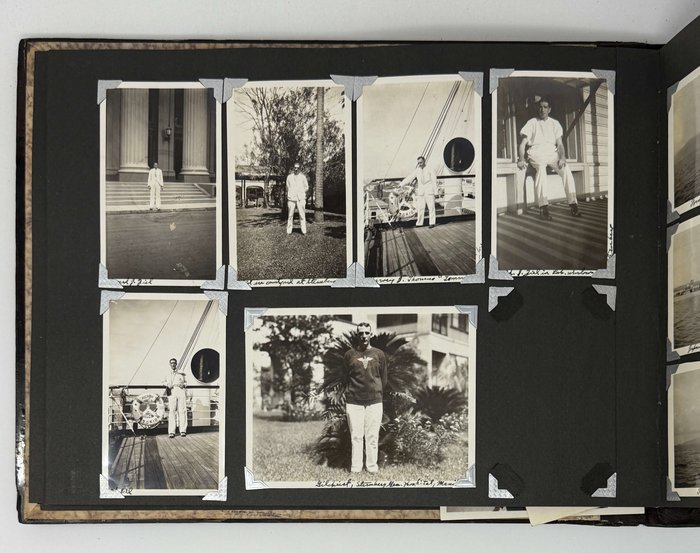
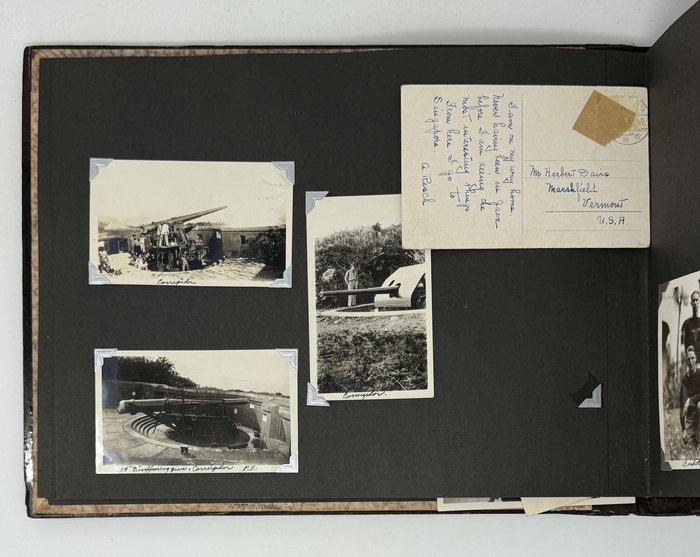
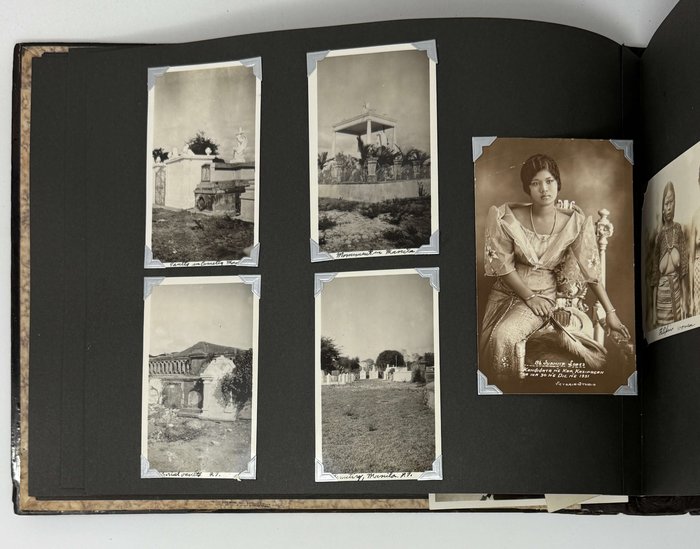




#PE50
Ca. late 1930s
Oblong Folio album (ca. 27,5x36,5 cm or 11x14 in). 25 card stock leaves (11 blank). With 128 mounted original gelatin silver photographs, from ca. 10x12,5 cm (4x5 in) to ca. 6,5x11 cm (2 ½ x 4 ¼ in). All but two photos with period ink manuscript captions on the margins. With two mounted postcards (one real photo and one printed), both ca. 8,5x13,5 cm (3 ¼ x 5 ¼ in), both with studio captions on the margins. The printed postcard with a period manuscript text and address on verso. Period Japanese lacquered album with a brown gilt-tooled spine. The front board with a gilt-painted scene showing a rickshaw driver carrying a geisha and a typical Japanese landscape in the background (Mount Fuji, sea coast with boars and a temple, a Japanese pine, &c.); the scene is decorated with pieces of mother-of-pearl. Binding slightly rubbed on extremities, several images with creases on the margins, one with a minor tear, two photos possibly previously removed from the album, a few photos mildly faded, but overall a very good album of interesting photos.
Historically significant collection of original gelatin silver snapshot photographs, taken by a U.S. military medical officer who served in the Sternberg General Hospital in Manila, Philippines, in the late 1930s. Named after U.S. Army Surgeon General George Sternberg in 1920, the hospital was the main U.S. military medical facility in the Philippines until it was destroyed during WW2.
Compiled in the years leading to WW2 (apparently, between 1937 and 1939), the album contains about ninety photos of the Philippines – mostly, Manila and its environs. A series of images related to Sternberg General Hospital includes views of its grounds and facilities, two photos of a Christmas tree inside the hospital lab (where the compiler most likely worked), three group portraits of the members of “basketball team, Sternberg Gen. Hospital,” and an individual portrait of the team member, captioned “Gilchrist, Sternberg Gen. Hospital.” Several photos portray the compiler’s friends and colleagues in Manila: “Harvey G. Thomas,” “Yeager,” and “Edward G. Ziel” (“in courtyard at Sternberg,” “in Lab window, Sternberg,” on board the Japanese steamer “M.S. Chichibu Maru” – renamed “Kamakura Maru” in 1939, &c.).
The photos of Manila show the “dock where or boats tied up,” “old tin church” (San Sebastian Basilica, built in 1891, the only steel building church in the Philippines), Manila Bay (featuring Manila Hotel and Government Buildings, naval ships and tankers in the harbour), Intramuros District (general views, “part of old wall,” San Agustin Church, “street inside old Manila”), five views of “old Spanish ruins” (actually, ruins of the Nuestra Senora de Gracia Church in modern-day Makati City, Metro Manila, burned during the initial skirmishes of the Philippine-American War in 1899), Manila cemetery (“burial crypts, Manila,” “vaults in cemetery, Manila,” “monument in Manila”), “street scenes in Philippines,” “stone quarry not far from Manila P.I.,” &c.
Very interesting are a dozen photos of the American military installations in Manila Bay. The images show artillery guns in “Fort Drum, entrance to Manila Bay” (El Fraile Island) and a series of views of Corregidor Island facilities (Parade Grounds, military barracks, “buildings on Corregidor,” artillery guns and personnel, “14” disappearing gun”).
The album also contains about twenty-five photos of the U.S. hill station of Baguio in central Luzon Island, including several views taken from the train on the way to town (railway station in Damortis and others), images of “Army Hospital at Baguio,” bungalows, rooftops and famous local pines, “scene from road to Antamoc mine near Baguio” (Antamok gold mine, near Itogon town southwest of Baguio), “Filipino dwellings, Antamoc gold mine near Baguio,” three photos of traditional Filipino burial sites with the remains laid in between tree branches or special structures on the mountain side, mountainous scenery, &c. Five images portray native Filipino women and girls in traditional outfits (“Ifugao girl,” “native washing clothes,” “Filipino girls,” &c).
The album closes with thirty-six photos of Chinese port cities of Shanghai and Chingwangtao (Qinhuangdao, Bohai Sea), taken during the compiler’s voyage on board the USAT “U.S. Grant” after the beginning of the Second Sino-Japanese War (1937-45) and Japanese capture of Shanghai (November 1937). A series of views of the Yangtze River, taken from the deck of the “U.S. Grant” in Shanghai, shows Japanese war and transport ships, “Jap soldiers on river bank, Shanghai,” ruins of Zhabei district, destroyed during the Battle of Shanghai (“ruins of Chapei district, Shanghai,” “Chapei section of Shanghai showing shell craters & ruined blds.,” &c.), Chinese sail and merchant boats, International Settlement seen from the river, &c. At least two images feature “U.S. Grant’s” lifebuoy with the name of the ship on it. There are also views of the “Dollar Lines dock, Shanghai, Chinese laborers fighting for money thrown on dock,” a closer view of the International Settlement with a docked naval cruiser, a city street, &. Very interesting are seven snapshot photos taken during the ship’s stop in Chingwangtao, showing “merchants near dock,” four street scenes and two scenes with U.S. soldiers during “a few minutes rest on hike near Chingwangtao, China.”
Overall a historically significant original visual source on the history of the U.S. military in Manila shortly before WW2 and the Japanese occupation of Shanghai in 1937-1945.



